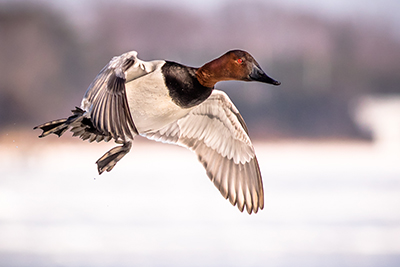 Located in southeastern Cecil County, Maryland along the northern shore of the
Sassafras River, this property is owned by the U.S. Army Corps of Engineers and
leased to the Department of Natural Resources for wildlife management and recreation. Grove Neck MHA is a Designated Wildlife Sanctuary. Habitat includes forested land surrounding the sanctuary which is primarily a wetland.
Located in southeastern Cecil County, Maryland along the northern shore of the
Sassafras River, this property is owned by the U.S. Army Corps of Engineers and
leased to the Department of Natural Resources for wildlife management and recreation. Grove Neck MHA is a Designated Wildlife Sanctuary. Habitat includes forested land surrounding the sanctuary which is primarily a wetland.
 Click Here for Map
Click Here for Map
Management
Grove Neck MHA is managed by the Wildlife and Heritage Service. The mission of the Wildlife and Heritage Service is to conserve and enhance diverse wildlife populations and associated habitats while providing for public enjoyment of the State’s wildlife resources through hunting and other wildlife-dependent recreation.
Regulations for All Users
Unless otherwise posted or with a permit issued by the Service it is UNLAWFUL to:
- Operate or possess a vehicle on roads, trails, or waterways not open to general traffic.
- Bait or feed wildlife.
- Use or construct permanent blinds or tree stands. All portable blinds or stands must be removed at the end of the day.
- Ignite, cause to be ignited, or maintain a fire.
- Camp
- Remove, disturb, damage, or destroy any mineral, plant, rock, tree, or nongame animal.
- Have dogs off leash from April 15 through August 15.
- Use dogs to chase fox and raccoons.
- Release any animal or plant.
- Conduct commercial activities.
- Place a cache for the purpose of geocaching.
- Operate, possess, or use combustibles, explosives, or fireworks.
- Dig for relics and treasures, remove prehistoric or historic artifacts, or use a metal detector without a permit from the Office of Archeology.
- Deposit litter or refuse including, but not limited to, animal carcasses, appliances, brush, debris, furniture, garbage, hazardous material, tires, waste paper, yard waste, or other litter.
- Vandalize real property including any blind, building, crop, equipment, gate, habitat, plant, road, sign, trail, vehicle, vessel, or other public property.
- Graze cattle, goats, horses, sheep, or other domestic animals.
- Place decoys prior to 1 hour before legal shooting hours, leave decoys overnight, or remove decoys later than 1 hour after legal shooting hours.
- Target shoot.
Hunting
Public hunting on Grove Neck MHA is permitted during legal hunting seasons with restrictions (see below). A free permit is required and available from the DNR Wildlife and Heritage Service Gwynnbrook Wildlife Office or online. Hunting is available for waterfowl only in accordance with current hunting laws and regulations established by the Maryland Department of Natural Resources.
- Click here to apply for the Free Public Hunting Permit.
- Hunting is allowed during all legal waterfowl seasons only at designated waterfowl sites.
- Two waterfowl sites are available for use on the Sassafras River. Reservations are required during any waterfowl season from September through January.
- No other game species may be hunted. No waterfowl hunting is allowed in the sanctuary.
- Permitted hunting devices include any legal devices allowed for waterfowl.
- Trapping is not allowed.
Non-Hunting Users
Grove Neck MHA is open year-round to non-hunters. A C&D Canal Lands
Non-Hunting Permit is required. Be aware of active hunting seasons. The property is open for the following activities:
Directions
Grove Neck MHA is located in the southeast portion of Cecil County, Maryland. Take Rt. 213 to Rt. 282 east (Crystal Beach Rd.) Take Grove Neck Rd. to the intersection of Tockwogh Dr. for available parking. For additional information or seasonal permits, contact the Gwynnbrook Wildlife and Heritage Service Office at 410-356-9272.
Canvasback in fliht, photo by Jerry amEnde